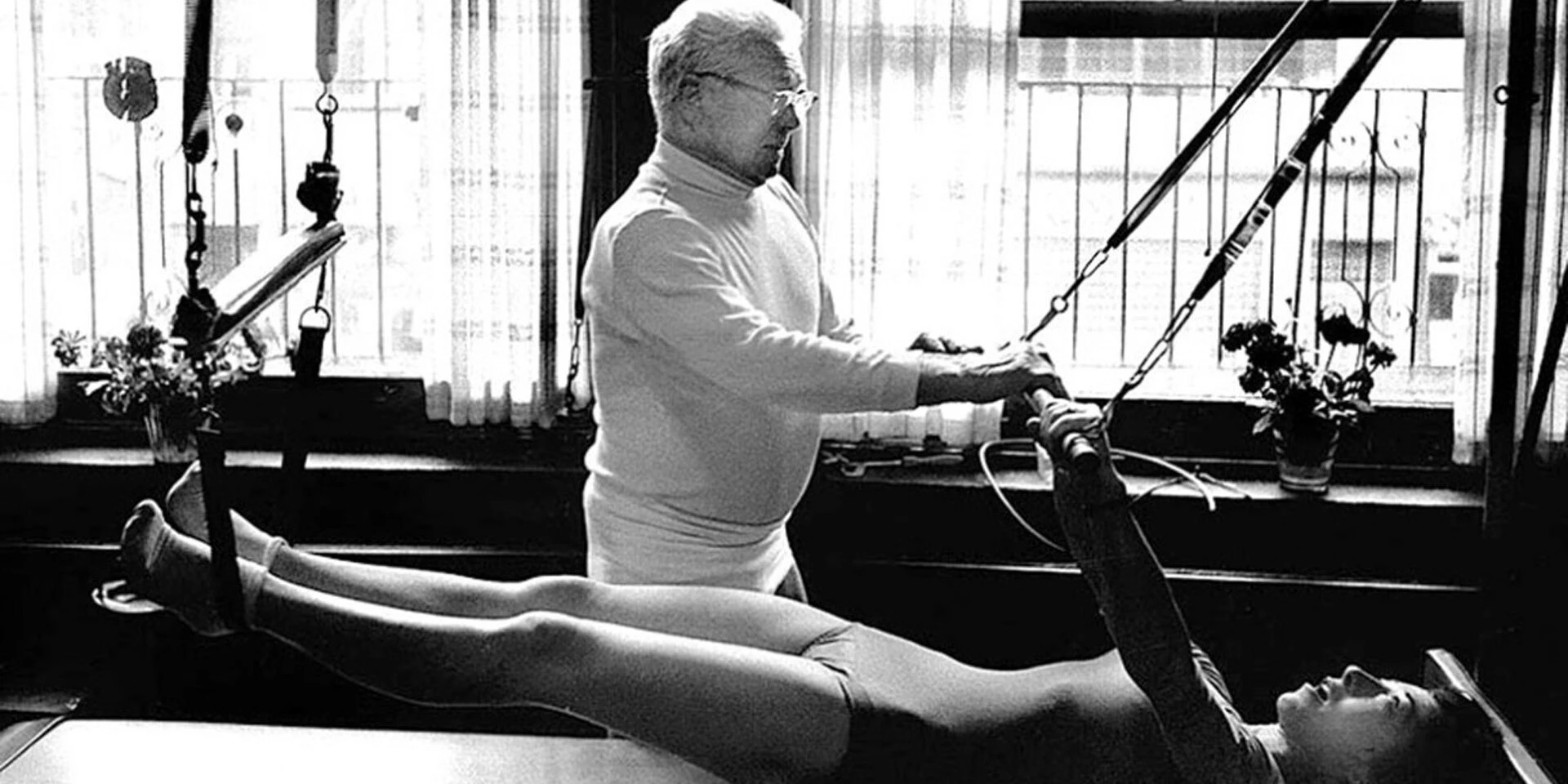pilates
Pilates is a system of mind-body exercise developed by German physical trainer Joseph Pilates in the early 20th century. Known originally as “Contrology,” Pilates emphasizes core strength, flexibility, and overall body awareness. This exercise method combines a series of controlled movements with precise breathing techniques to enhance physical strength and mental focus. Pilates involves a combination of around 50 repetitive exercises designed to challenge and strengthen the body. These exercises are built around what Joseph Pilates referred to as the “five essentials”: breath, cervical alignment, rib and scapular stabilization, pelvic mobility, and the utilization of the transversus abdominis, a key core muscle. Each exercise is generally repeated three to five times, aiming to engage the core and other muscle groups while maintaining proper form and alignment.

Practiced worldwide, Pilates has become particularly popular in developed countries such as Australia, Canada, Germany, South Korea, New Zealand, the United Arab Emirates, the United Kingdom, and the United States. The method is designed to improve physical strength, flexibility, and overall body awareness while integrating mind and body. Unlike high-impact exercises, Pilates focuses on controlled, deliberate movements and is accessible to people of various fitness levels and ages.
The History of pilates
Joseph Pilates, the creator of Pilates, was born in Mönchengladbach, Germany. His father was a gymnast, and his mother was a naturopath. Growing up, Pilates was exposed to various forms of physical training and natural health practices, which influenced his development of the Pilates method. His journey with Pilates began during World War I when he was interned at the Knockaloe camp on the Isle of Man. During his internment, Pilates developed and refined his system of exercises, working with fellow internees to enhance their physical and mental well-being.

The origins of Pilates are deeply rooted in the physical culture of the late 19th century, which focused on exercise and health. Pilates was influenced by various physical training regimens, including gymnastics and “corrective exercise” practices. He was inspired by the work of Pehr Henrik Ling, a pioneer in the field of physical education, and sought to create a method that combined physical training with mental discipline.
Pilates introduced his method to the public through his writings, including his seminal books, “Your Health: A Corrective System of Exercising That Revolutionizes the Entire Field of Physical Education” (1934) and “Return to Life Through Contrology” (1945). These works outlined his principles and exercises, emphasizing the importance of controlled movements, core strength, and proper alignment.
mat and reformer pilates
mat pilates
Mat Pilates is performed on a mat and uses the body’s weight as resistance. This form of Pilates focuses on core stability and alignment while utilizing gravity to challenge the muscles. Common mat exercises include the “roll-up,” where participants sit with their legs extended and roll their spine down to a lying position before rolling back up, and the “single-leg stretch,” which targets the core while engaging the legs. Mat Pilates exercises are typically performed in a sequence, promoting fluid movement and coordination.
Accessories such as resistance bands, small weights, or a Pilates ring may be used to enhance the workout. The primary advantage of mat Pilates is its accessibility—no special equipment is needed beyond a mat and optional accessories. This makes it a convenient option for individuals practicing at home or in a class setting.
reformer pilates
Reformer Pilates is performed using a specialized piece of equipment known as the Reformer. The Reformer consists of a sliding platform, springs, straps, and pulleys that provide resistance and support. This apparatus allows for a wide range of exercises that target different muscle groups while offering varying levels of resistance. The springs on the Reformer can be adjusted to modify the intensity of the exercises.
Exercises on the Reformer include movements like the “footwork,” which strengthens the legs and improves alignment, and the “jumpboard,” which adds a cardiovascular component to the workout. The Reformer’s design helps support proper alignment and can be particularly beneficial for individuals with specific physical needs or injuries.
Reformer Pilates is often praised for its ability to provide a more tailored workout experience due to the versatility of the equipment. It allows for exercises that can be adapted to individual fitness levels and goals, making it a popular choice for those seeking a more personalized approach to Pilates.

benefits of pilates
Physical Benefits
Pilates offers a wide range of physical benefits. One of the primary advantages of Pilates is its focus on core strength. The core muscles, including the abdominals, lower back, and hips, are essential for overall stability and balance. By strengthening these muscles, Pilates can improve posture, reduce the risk of injury, and enhance overall physical performance.
Flexibility is another key benefit of Pilates. The method incorporates stretching and lengthening exercises that help increase the range of motion in the joints and muscles. Improved flexibility can enhance athletic performance, reduce muscle tension, and alleviate stiffness.
Pilates also emphasizes proper alignment and posture. Many of the exercises focus on correcting imbalances and ensuring that the body moves in a biomechanically efficient manner. This can be particularly beneficial for individuals who spend long hours sitting at a desk or engaging in repetitive activities.
Mental Benefits
In addition to its physical benefits, Pilates offers significant mental benefits. The method encourages mindfulness and concentration through its focus on controlled movements and breath awareness. Practitioners are required to be fully present and attentive during their workouts, which can help reduce stress and improve mental clarity.
The mind-body connection cultivated through Pilates can lead to increased body awareness and self-acceptance. By paying close attention to how the body moves and feels, individuals can develop a greater understanding of their physical and emotional states.
Rehabilitation and Injury Prevention
Pilates is often used as a rehabilitative tool for individuals recovering from injuries or surgeries. Its low-impact nature and emphasis on controlled movements make it suitable for rehabilitation purposes. Many physical therapists and healthcare professionals incorporate Pilates exercises into their treatment plans to help patients regain strength, flexibility, and functional movement.
Moreover, Pilates can play a role in injury prevention by addressing muscular imbalances and promoting proper body mechanics. By strengthening the core and improving overall alignment, Pilates can help reduce the risk of injuries related to poor posture or muscle weakness.
general wellness
Incorporating Pilates into a regular fitness routine can contribute to overall wellness. The practice promotes a balanced approach to exercise by combining strength, flexibility, and mindfulness. This holistic approach can enhance overall quality of life, support emotional well-being, and foster a sense of vitality.
comparison with yoga
While Pilates and yoga are both mind-body practices that focus on strength, flexibility, and breathing, they have distinct differences. Yoga often incorporates spiritual and philosophical elements, with poses typically held for extended periods. In contrast, Pilates focuses more on controlled, repetitive movements and core engagement, with exercises performed in a flowing sequence.
Yoga emphasizes flexibility and relaxation, using breath to deepen poses and enhance relaxation. Pilates, on the other hand, uses breath to energize the muscles and support precise movements. While some exercises in Pilates and yoga may resemble each other, the underlying principles and goals of each practice can differ.
Both disciplines offer valuable benefits and can complement each other in a comprehensive fitness regimen. Individuals may choose to practice one or both based on their personal preferences, fitness goals, and needs.
conclusion
Pilates is a versatile and effective exercise method that offers numerous benefits for physical, mental, and emotional well-being. Whether practiced on a mat or using specialized equipment, Pilates provides a holistic approach to fitness that emphasizes core strength, flexibility, and mindfulness. Its historical roots, development, and application in modern fitness make it a valuable practice for individuals seeking to enhance their overall health and quality of life. Whether used for rehabilitation, injury prevention, or general wellness, Pilates continues to be a popular and widely practiced method for improving physical and mental health.





